“women were always at the mercy of whether men felt like being benevolent or not“
Amy is joined by Annabelle Qian to discuss the Women in Ancient China and Women in Early Imperial China by author Bret Hinsch, and explore patriarchy’s history in China from the Neolithic Age to the Eastern Zhou Dynasty (221 BCE).
Our Guest
Annabelle Qian
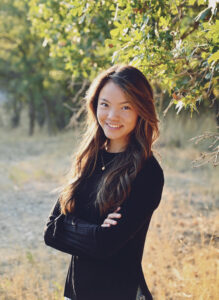
Annabelle Qian is an 18 year old scholar who just graduated from Waterford High School, and will be studying international affairs and economics at the University of North Carolina at Chapel Hill this fall. Annabelle is biracial and trilingual. She lived in Guangzhou, China for 10 years where she cultivated her study of the intersection between global politics and personal identity. Annabelle is an award winning historical writer; she has presented papers in Washington D.C. for international competitions, as well as at the Utah State Capitol.
The Discussion
Amy Allebest: If you go anywhere in the world and ask someone to think of a visual symbol that represents balance and harmony, most people will think of the yin and yang. This almost universally recognized symbol is half black and half white, each half containing a dot of its opposite color. It originated in China around the third century BCE, most prominently within the religion of Daoism but also widely used in other philosophical contexts as well. The concept of yin and yang is that all things exist as inseparable and contradictory opposites. And these pairs of opposites both attract and complement each other. Also, as the black and white circle illustrates, each side has at its core an element of the other, which is represented by the small dots. Technically, neither pole is superior to the other and as an increase in one brings a corresponding decrease in the other, a correct balance between the two poles must be reached in order to achieve harmony. However, many scholars have pointed out that especially in Confucian philosophy, the complementarity between yin and yang does not necessarily mean gender equity. Consider the list of characteristics of yin compared with those of yang. Yin is associated with the feminine, and traditionally it represents black, dark, north, passivity, the moon, softness, weakness, earth, cold, oldness, vallies, poverty, and chaos, among other things. Yang, on the other hand, is associated with the masculine. And traditionally yang represents white, light, south, fire, creativity, activity, the sun, strength, heaven, warmth, youth, mountains, richness, and order.
As early as the second century BCE there were texts that appeared expressing the exaltation of yang and the devaluation of yin. So, with this dichotomy in our minds and this question of harmony and hierarchy, we begin a two-episode series on women in Ancient China. We will be referencing two books, Women in Ancient China, and Women in Imperial China, both of which are by author Bret Hinsch. And to discuss these books, I’m thrilled to welcome Annabelle Qian to the podcast. Welcome, Annabelle! Thanks for being here.
Annabelle Qian: Thank you so much! Hi Amy, I’m so glad to be here. I really love this podcast and I can’t wait to start discussing.
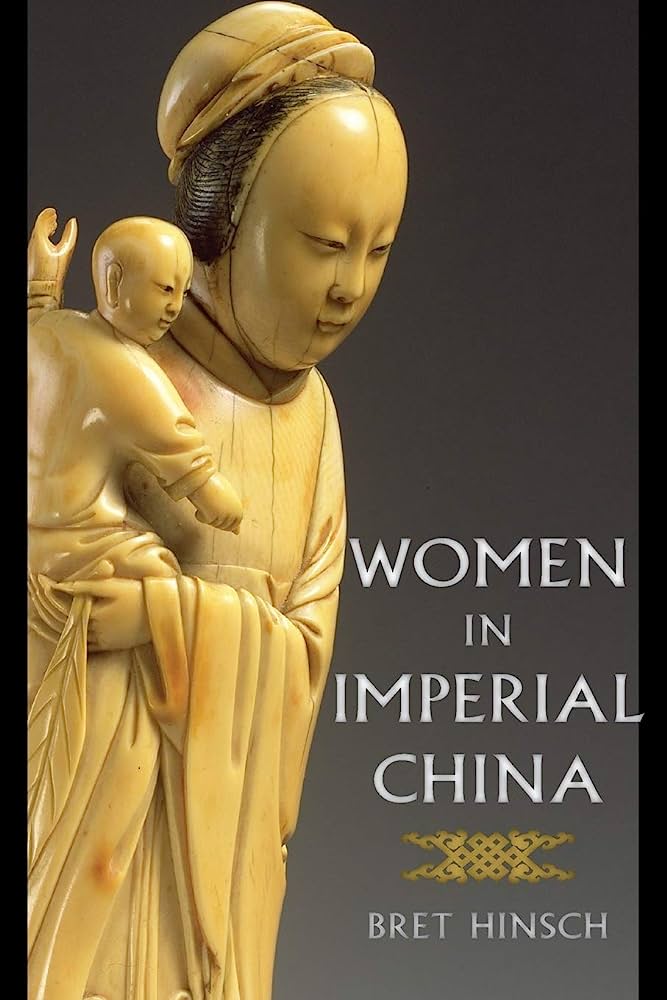
AA: Yep, so excited. Annabelle and I met because you, Annabelle, go to school with my daughter and they’re in the theater department together. And I was so struck by your performances on stage, from the very first time I saw you, you have such stage presence. And then I’ve gotten to know your mom and I’ve been so excited to have this chance to get to know you better and to explore a topic that actually you have a lot of background in. And so I’m really excited because you’ll be teaching me a lot. And I have to say too, Anabelle, that because you speak Chinese and I don’t, I want you to correct me. So just putting that out there right now, I might ask you for help on pronunciation throughout the episode and I’ll be grateful for you to jump in there. But I’d love you to introduce yourself and share a little bit about you, where you’re from, your family, and what your future holds and stuff like that. Just help us get to know you a little bit.
AQ: Yeah, of course. Hi, I’m Annabelle Qian. I’m eighteen years old. I was a senior in high school, I actually just graduated three days ago. I’m half Chinese, so my father’s Chinese and my mother’s American. And they met when my mom went to work in China at an international school, they both work in education. I was born here in Utah but moved to China when I was three and grew up there for ten years, and then moved back here when I was thirteen. I went to an international school in China with my two brothers, and that’s where I was raised. And as I got older, I really started studying Chinese language and history and looking towards a career in international relations and really wanting to look at social and contemporary issues, but especially in relation to East Asia. So now I’m going to the University of North Carolina at Chapel Hill and I’m going to be studying International Relations and public policy there. Thank you so much for having me, I’m really excited to be here.
AA: Yeah, I’m so, so excited about this. Do you envision yourself working specifically either with China or in China? Do you think you’ll live there again, or is that part of your goal or just see how things go?
AQ: I think I definitely do want to go back to China soon. I think there’s a lot of great professional opportunities there and I would love to live there again. Yeah, I really loved my time there and I hope I can go back.
AA: Where is your dad from and where did you live when you lived there as a family?
AQ: My dad is from Hubei China, which is kind of central. And then I lived in Guangzhou, which is a little bit more southeast China. It’s right by Hong Kong. So yeah, he was from a very small village and just went to the city when he went to college and then later for his job. Guangzhou is a huge city, 15 million people, and it’s just very, very busy, very intense, but it was super fun to live there.
AA: Hm, yeah. That’s really, really fascinating. Well, like we talked about before we started, please share any stories you have or anything that comes to your mind as we’re talking about– we’re talking about really, really old history, but I’m wondering if anything pops out as like, oh, I’ve seen that. I’ve seen that with my grandparents, or I’ve seen that in my school or community. Then I would really love to hear about that.
AQ: Yeah, of course.
AA: So, let’s jump in. I’m going to quickly mention the author. Bret Hinsch is a professor of History at Fo Guang University in Yilan, Taiwan. He was educated at Yale and Harvard and is the author of many books, including, as I mentioned, the two that we’re reading today, but also a book called Women in Early Medieval China and Women in Early Imperial China. He also wrote a book called Masculinities in Chinese History, and that would be so interesting to read, but we didn’t get to that one. And he also hones in on specific dynasties and he’s written many, many publications. He’s also famously the author of an article called “Passions of the Cut Sleeve: the Male Homosexual Tradition in China”. And he is a gay man himself. He was brilliant and I thought the books – I mean, they’re very, very academic. They’re textbooks, basically how they read to me, but I found them easy to understand. How about you, Anabelle? What was your experience like reading them?

AQ: Yeah, I definitely agree. They’re from a very scholarly perspective and that definitely comes through the whole time. But I thought it was really cool that he made such dense history so accessible to everyone. And I thought these books can definitely be used in educational settings or just for personal reading and anyone can access them, which is cool.
AA: Okay. I’m really glad because when I gave them to you, I gave these books to Anabelle like right before finals and AP tests. I was like, uh, I mean do you really want to do this because they’re not fast reads. But then as I was going I was like, okay, hopefully this won’t be too bad because they actually were pretty easy to read. I really enjoyed them. I intended to kind of skim them and I read every word because I thought they were so interesting. But one more question before we dive in was I wondered how you felt, because I did notice myself at some points being like, this is a man writing about women. So it made me feel a little bit skeptical sometimes because even if he’s trying to be objective or trying to see things from a woman’s point of view, I don’t know if he can. And then also I thought, how do you feel, Anabelle, he’s not Chinese, he’s a white man writing about Chinese women. What were your thoughts on that? That’s a big scholarly debate right now. I’m sure you know that, is like who has the right to write about what. So what were your thoughts?
AQ: Well, I think that definitely came through in some parts and I did think about it. And he actually mentioned that too, in his preface for Women in Imperial China about how as a scholar doing research, a lot of people questioned his credibility to write about women. And he talked about when he went to the Harvard Library and tried to access a part of the library about women’s history, someone didn’t let him in because she thought he shouldn’t be able to research that. And I thought that was really interesting. But I think overall, his take is really scholarly and objective and for the most part he doesn’t try to write from a woman’s perspective or a Chinese person’s perspective because he knows that he can only write from his own perspective as a researcher. And I thought he did a really good job of that. There are definitely some elements of Chinese culture and specific ideologies that are just more difficult to understand if you didn’t grow up with that, but I think he does a really good job of researching and sharing what he does know and what he wants to share. And like you say, your podcast is for everyone, and feminism as an idea is for everyone to learn about. And that can really enrich your understanding of history no matter who you are, what your own identity is.
AA: I love that. That’s so great, Annabelle. Let’s start with Part One, which is the neolithic era. And one part that was very interesting to me right off the bat was that he writes about the “myth of matriarchy”. So, this has come up in multiple episodes in the past, even from The Chalice and the Blade, which was our very first book in Season One about Neolithic gender relations and if it was a more egalitarian time. And it definitely was a more egalitarian time. But Hinch points out that there was this idea that there had been this idyllic, matriarchal past where women were in charge, and he said “that took hold among Chinese historians just like it did elsewhere in the world.” And he says that there were myths that did exist in the written record later on where there was, you know, a legend of a kingdom of queens. And at that point I was like, wouldn’t that be called a queendom, not a kingdom? But they’re like, oh, there’s this place where women rule, but “no one has ever been there.” And that made me laugh. He says that perhaps there was a region in China that had a queen, and kind of the exception proves the rule, right? Oh, a woman’s in charge! And so it gained this reputation. And he points out, “these stories seem to have stemmed from the misapprehension that rule by a woman constitutes matriarchy, even though a female monarch can exercise power within a patriarchal system.” And he also points out that imperial authors who are writing about these ‘matriarchies’ “derided strange lands with powerful women seeing female rule as proof of barbarism.” So it wasn’t like it was a great thing for women to even be in charge. So anyway, no matriarchy in Neolithic China, but perhaps more power for women than existed later. So with that established, can you tell us about some parts that stuck out to you from the Neolithic age, Annabelle?
AQ: Yes. So, from the Neolithic age, just like everywhere in the world at the time, there’s evidence of hunting and gathering, which is a more egalitarian way of life than later on. Women were primarily gatherers of plants or small prey, and hunting was seen as more dangerous so that was often reserved for the men, although certain practices for hunting and gathering married. And we can see through osteo-archeological studies that researchers found that men and women had a pretty similar life expectancy, which can be evidence that they also had similar health and were treated relatively equally during their lives. Another part of that was their burial goods and things that were found with them in their tombs, and that showed how much respect they had in life and how well known they were. So they found that women and men had pretty similar burial goods and were buried with similar body ornaments and that spoke to their equal status in society. And there definitely was a division of labor, but that didn’t necessarily mean a lowered status for women. It just meant they had different tasks, but they were often physically and equally straining and difficult.
AA: Yeah. This, to me, sounded like basically everywhere in the world that I’ve read about. Before agriculture, people were kind of just everybody pitching in to survive, and it seemed like everybody was struggling and thriving equally. It seems like gender wasn’t that relevant. Okay, so then humans began cultivating grain and what happened then?
AQ: Well, that kind of began the emergence of patriarchy when men took control of more prestigious ranks and positions, especially in the agricultural sector. And then this is kind of where we see the shift in life expectancy. Now women began dying younger than men, and people said it might have been because of the risks and dangers of pregnancy and childbirth, but also because they didn’t have as much access to essential resources, and men often did and started monopolizing their resources and their products of agriculture. And that definitely started the rise of patriarchy and men in power. And also burial positioning like with one man and multiple women, or women as human sacrifices even, showed evidence of polygyny and concubinage, and also of women being sacrificed, which again, asserted men’s control of them during their lives.
…there definitely was a division of labor, but that didn’t necessarily mean a lowered status for women. It just meant they had different tasks, but they were often physically and equally straining and difficult.
AA: Yeah, in the most dramatic way, right? If a man dies and then they’re like, well, we’re going to put all of his most prized possessions, his wealth, including live women that we will then kill in order to honor this man. I can’t think of anything that’s more dramatically gender inequitable than that. So that covers the Neolithic and the agricultural revolution.
So now we’re going to start with the dynasties. And the first dynasty that we’re going to talk about is the Shang Dynasty, and that was from 1600 to 1046 BCE. And this was during the Bronze Age, and much of what we know about the Shang Dynasty comes from inscriptions on bronze, so that was their source material. There were these bronze bells or bowls, and I thought it was interesting how they made those artifacts. They would write with a stylus onto wet clay and then fire the clay and pour the liquid bronze into there so the bronze bowl or bell would have the writings that they had carved into clay, so I thought that was interesting. So whatever they wrote on those objects gives the researchers the information about what the society was like. Bret Hinsch writes in the book that during the early Bronze Age, society changed in many, many ways and became extremely unequal. People high and low inherited their status, so it was a very stratified, hierarchical structure to society. He writes that “birth mattered more than age or gender in apportioning one’s overall position in society. In some places, a small hereditary elite wielded immense authority over the mass of commoners. The most successful of these nascent states gradually expanded to become the Shang Dynasty.” The Shang exercised hegemony over much of the North China region where they created what he calls “the most sophisticated civilization ever seen in East Asia.” I was really struck by that because it’s the earliest of all the dynasties and he said it was so sophisticated. So I was instantly hooked at the beginning of the chapter. Do you want to talk about some of the main points from the Shang Dynasty, Annabelle?
AQ: Yes, definitely. Well, this is where the author of the book started referencing societal stratification a lot and how inequality really started emerging in the Shang Dynasty. And one part of that was for religious ceremonies and rituals, where people primarily worshiped male ancestors and deities and the discrepancy in burials became even more extreme. And there were a couple stories mentioned about consorts to the king. So one was about Fu Jing, who was a queen during the Shang Dynasty, and she was just a really important figure. She led troops into battle and she oversaw harvests, she brought a lot of wealth to the kingdom and was really honored after death. So that was just an example of one woman who was a consort to the king but kind of had a lot of power and exercised a lot of independence. And another was Fu Hao, who was an aristocrat, had a lot of wealth and power and she conducted important religious rituals on behalf of the kingdom and had a lot of great military accomplishments. And she also led soldiers into battle and commanded the largest army ever recorded in Shang records. So I thought that was really interesting.
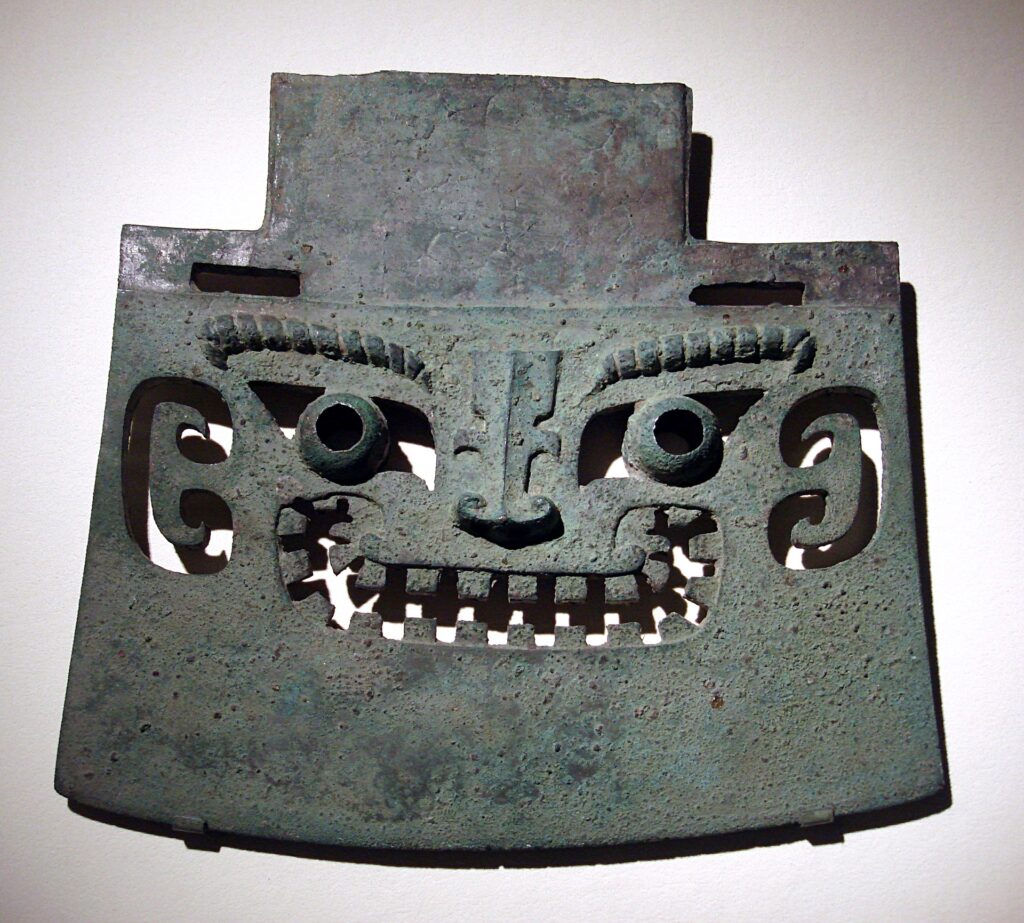
AA: Me too. I was really surprised by those early dynasties, women were really engaged in warfare and leadership within warfare. That was super surprising to me.
AQ: Yeah. And we see later that women become less involved in warfare and just don’t have that option to even participate in troops, let alone lead them. So seeing this in such an early dynasty is really cool.
AA: Yeah, really, really cool. Okay, so the next era is the Western Zhou era, and that was from 1046 to 771 BCE. So the Shang dynasty was located in central China to the northwest of those people of the thriving Shang Dynasty. There was a group of pastoralists who took care of grazing animals, and they made contact with the Shang Dynasty through the years and traded cultural elements. They learned from them how to practice agriculture and developed cities. And so it seemed like they were pretty friendly with each other for a period of time, but then in 1046 an army of Zhou soldiers defeated Shang forces and they established a new dynasty. The Zhou people ruled a huge area of land so they kind of came south and ruled this whole huge area and they instituted a strict hierarchical system, kind of in order to bring everyone in line under them. Because they had some different cultural practices. So they’re like, okay we’re going to get really strict and we’re doing all of these things that we’re going to decide.
So one interesting thing about this era is that they were still keeping records on bronze objects, either with the clay molds or now they started etching directly onto the bronze. But whereas there weren’t very many inscriptions about women during the Shang Dynasty, during the Western Zhou Dynasty there were tons of stories about women. And I thought it was so fascinating and awesome because there were all different kinds of women, from queens to peasants and every social strata in between. So I thought that it was really, really wonderful that there was such a rich record. What stood out to you, Annabelle, from this dynasty?
AQ: Well, I thought it was really interesting how the records were kept and how we can kind of use that to see the status of a woman. For example, the two most important sources that we have that show our information about women from the Zhou Dynasty were epigraphic texts, that were just the bronze inscriptions that you had talked about, and those recorded the details of elite female life. So not the common people, just the most elite aristocrats and important families. And then through poetry, and that was how people talked about the common women and the ones who were poorer or less elite. Those were the two main sources of information we had that kind of showed their different statuses in life. And then one thing I thought was interesting that was talked about in the book was how poetry started putting women into this image of these perfect standards of behavior and appearance. And men went into great detail, men who were poets, about how they wanted women to look and act and be. And that kind of set this precedent for women to match that and that became very confining and that was seen a lot through poetry in this era.
AA: Mm-hmm. I thought it was interesting you pointed out yourself that these images of female beauty were then used to control women, right? And I thought that was such an interesting insight that once it’s written down, it almost doesn’t matter who writes it down, but you write it down like you just said, “I think a woman should comport herself in this way and she should look like this…” Then one guy’s opinion is then used as kind of a beauty standard that can then impact an entire culture.
AQ: Yeah. Another aspect of the Zhou Dynasty was that men could very easily divorce a woman if they were married, but if the rejected woman didn’t want to or couldn’t go back to her father’s house she was left destitute. One big aspect of that was the unequal property system, so women couldn’t retain any of their own wealth or resources even in a divorce. She didn’t actually own anything. It all belonged to her husband. And I think the same went for their children, right? The children were the property of their father and not her. So, a divorce really wasn’t ideal for the woman because she couldn’t remain independent without her husband.
And this is where we see women becoming less involved in war and in battles, like we talked about before. And women became more closely associated with integrity and virtue. This was the time where a lot of kings were referencing this idea of the Mandate of Heaven, meaning that they were divinely chosen to be the king by gods. And in order for that to happen, they needed to be very virtuous and therefore have virtuous women alongside them. So that kind of contributed to this idea that women had to be perfect in moral behavior. And that definitely came through a lot in kingdoms and in important families. But queens began to have a lot less authority and we see that on page 63 of the book, it has this quote: “Although a noblewoman stood far above most people in Zhou society, she ranked below her husband.” So even the most elite women in society were still not as elite as their husbands.
men went into great detail, men who were poets, about how they wanted women to look and act and be
AA: So no matter how much power a woman has, she’s still subject to whatever man is above her. Let’s talk about gender dynamics in ancestor worship.
AQ: The Zhou people often made sacrifices to all of their ancestors and to the deities. But an interesting thing was that a lot of them were women at this time, to female ancestors. They would go to temples and would pray to women who had died and worship them, which might have been considered unusual in different dynasties. But mourners used sacrifices and inscriptions to show respect for women, and that was even within a patrilineal kinship system, which was interesting. Although men still had a much higher position in ritual practices. And this related to the aristocracy, which was written on bronze inscriptions, but the poetry showed what ritual practices were like for common people. And women were allowed to participate, but always had subsidiary roles. They weren’t allowed to lead ritual practices or worship ceremonies, but they could help and gather flowers or prepare food. But it was the men who were actually leading the worship and who had full control over how people worshiped ancestors or prayed to deities.
AA: Okay, yeah. So again, the men during this era were allowing people to worship women ancestors. But like you said, that can change at any time. Because the men are allowing those things, or the men are allowing women to assist. Sometimes they do, sometimes they don’t. And there’s kind of this back and forth that I noticed, I mean, in general between the dynasties of more rights for women and then less, and then more, and then less, and different areas would ebb and flow. Yeah, that was very striking to me to see those patterns, but that since it was always in male hands women were always kind of at the mercy of whether the men felt like being benevolent or not. Which again, we see everywhere. That’s just a common feature of patriarchy, I think.
AQ: Yeah, definitely.

AA: So the next era was the Eastern Zhou era, whereas we just had the Western Zhou era. This was between 770 and 256 BCE. And in 770 BCE rebel forces forced the Zhou king to flee eastward. So everything shifted to the east and it changed the capital to the east as well. And this period marked a shift in culture, with cities becoming more prosperous and more complex. And like you alluded to earlier, Annabelle, where you said that sometimes queens would be powerful, during this era queens lost power. And prior to this also there were large clans that kind of ruled their geographical area in the country. And these large clans started to break down. And the nuclear family, these smaller units of society became the main unit of kinship. And so women, where they had less power on a big scale, they had more influence over matters within the home. And I thought we could start this section by talking for a minute about polygyny. And maybe Annabelle you can tell us what we learned about the practice of men having multiple wives and concubines.
AQ: Yes. During this time, and we’ll see this trend continuing later on, is that marriage was very much a financial transaction and not really chosen by individuals as much as families, and chosen based on how parents could benefit from unions. And for the elite people, it was about making connections and alliances with other lands and doing that through marriage. And polygyny kind of stemmed from that idea and also from the notion that men were powerful and could have multiple wives if they wanted to, and multiple concubines and just using different women for different purposes. For example, wives were chosen for their bloodline and were often not chosen by the men, but just chosen so then their children could be said to have come from certain elite families. And then concubines were chosen because they were favored by men. And that kind of created tension between wives and concubines because they were looking for attention and to be favored by the important man. And often he would prefer a concubine because he had chosen her as opposed to a wife who had been chosen by his family. So this kind of contributed to the emerging idea of women as property through arranged marriage, and women were inherited by a son if her husband was to die.
AA: Okay, you’ve got to stop there and we’ve got to repeat that. Let that sink in for a second. So just to be clear, let’s say… Erik has a bunch of wives…
AQ: And he dies…
AA: And so all of us, me and all the wives and concubines, are Erik’s property so we all get passed down to Stone.
AQ: To his son.
AA: Yes, to my son. So then, I mean, I imagine they have incest taboo and incest laws where I’m not going to be the wife of my own son, but the other wives and concubines would be.
AQ: Yes.
AA: The wives and concubines of the son.
AQ: They were just seen as his property, so naturally they would be passed to his son if he died. Yeah, it’s just crazy to think about.
AA: I mean, that did not sink it. I read the book along with you, but that didn’t sink in until I heard you say it and thought about what that would really mean. Yowza. Okay, you can keep going, I just had to dig into that for a second.
AQ: I know. Yeah, it’s insane. But yeah, the idea of women as property just became more and more enforced, especially by rules like that and how there was this idea that a woman was kind of owned by the entire family and not just a man. This is kind of still prevalent in Chinese culture today, where when people get married, the wife kind of joins the husband’s family and leaves her own family. And even in modern society, that’s kind of how it works, which is why a lot of parents in China still today would rather have a son because they know that he’s going to take care of them in old age because of the laws of filial piety that we’ll talk about later, he kind of has that obligation. Whereas if they have a daughter then her loyalties will be to her husband and his family and his parents, and will end up not taking care of them. So that’s kind of the idea that’s still remained today.
AA: Can I ask you a personal question and you can say you don’t want to answer it or we can cut it? Okay so your dad married an American woman, but his parents are Chinese. Was there kind of an expectation even though she was American that she would join his side of the family and that she would take care of his parents? Tell me how that worked.
…there was this idea that a woman was owned by the entire family and not just a man. This is still prevalent in Chinese culture today…
AQ: Yeah, well that was definitely a big concern. And my parents were kind of an interesting case because my dad did come from a very small village in China that still has a lot of traditional practices and customs. And the fact that he even married an American woman was just completely unheard of. In fact, they were recorded as being the ninth interracial couple ever in the village.
AA: Whoa. Oh my goodness.
AQ: And you know my mom, she actually wrote a memoir about her life and talks about that a lot. Yeah, I definitely recommend reading that to all the listeners.
AA: Yeah, say the name of her book again, Annabelle. That would be fabulous. A great recommendation.
AQ: Yes, it’s called How Sweet The Bitter Soup and it’s by my mother, Lori Qian. It talks about her story of going to China to this village and falling in love with a Chinese man and how they navigated that. It’s really interesting. But anyways, they were kind of a special case in the village and that was kind of the expectation that they would stay there and help his parents later. And my dad definitely does support his parents a lot now. And my family lived in China and would see them at Chinese New Year and more times if we could. But they definitely wanted everyone to come back there and support them.
AA: That’s really fascinating.
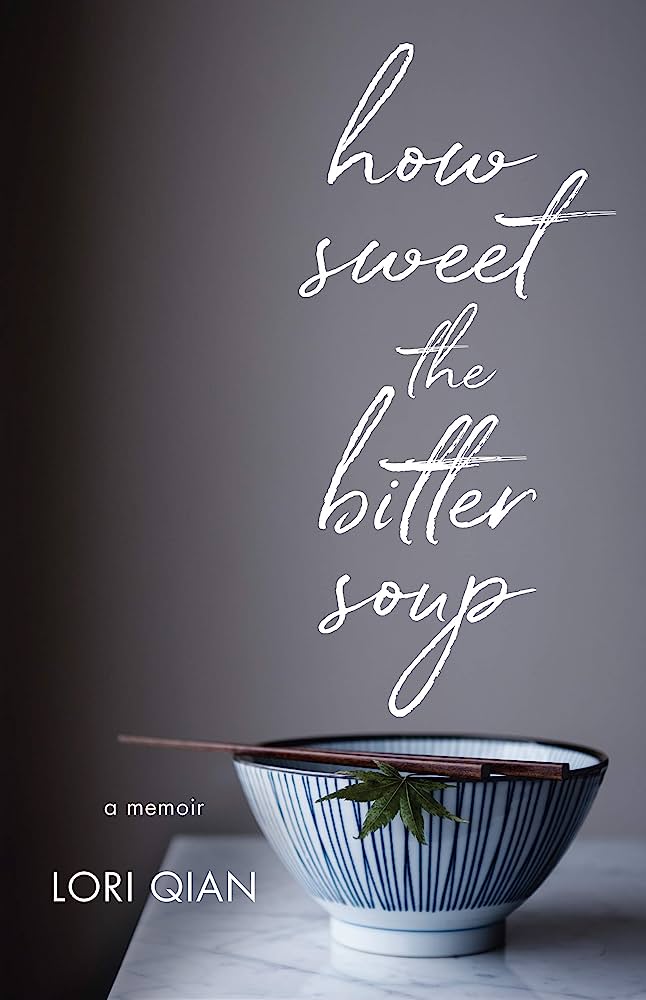
AQ: Yeah, so elite women usually married really young, and took part in the ceremony to symbolize transition into adulthood at the age of 15. And that was kind of the mark that they were ready for marriage. And the groom was often a lot older and his family had to give this symbolic gift to the family of the bride, otherwise she would be considered a concubine instead of a wife. So all of that ritualistic practice was really important for the distinction of wife versus concubine. And there were a lot of specific wedding rituals and ceremonies to make sure the marriage would be successful. Bearing children was essential for women, especially in elite families. And because of the laws of filial piety, which was a Confucian idea, that kind of gave women this idea that they needed to raise their children to be loyal to them and to be successful. Because basically the only way they could gain power within the family was through their children and the success of their children. And yeah, they got power through the accomplishments of their sons especially, and their sons would be raised to want to go back and help their mothers later on. So that was kind of how they gained power in the household.
And that distinction between wife and concubine kind of insured stability in society because the firstborn son of the legitimate wife was the father’s heir. So there wasn’t any competition, even if the father had a lot of children. So that just helped simplify things and make sure the society remained stable, because if there was ever competition among all the sons then that would mean a lot of chaos for the kingdom and for important families. So women became concubines in many different ways. Either their parents could send them off to concubinage or a man could purchase her from her family, or a servant could be promoted if chosen by the man, and all of the concubines were ranked by the men in the household.
AA: It would be so hard to be in that position, I think. And that will keep coming up, right, Annabelle? Like in literature coming up, these jealousies between women that were just a part of this system. There’s a part later in the book that talks about how because the law designated that men had all the power in the system, women relied on filial piety to kind of guilt their children into taking care of them. So strong but not very healthy bonds between mothers and sons developed. And the book says, “A savvy woman could manipulate her children’s feelings of dependence, obligation, and guilt to construct a uterine family,” like from the uterus, “consisting of herself and her children within her husband’s larger patrilineal family. By strengthening her bonds with her children, a mother raised her status in the family, counterbalanced the power of in-laws, and assured continued support and influence as she aged.”
Okay so, like you mentioned, the most important figure during the Eastern Zhou era, and one of the most influential of all Chinese thinkers was Confucius. And we just talked about Confucius in a previous episode so listeners will be familiar with him. But I’ll mention some of the most important points. He was alive from 551 until 479 BCE, roughly, I think those are estimates. But one concept that we talked about in the last episode, but I’ll repeat here too, are the Three Obediences. So a woman, when she is a child, needs to obey her father. Then when she gets married, she needs to obey her husband. And then when she has children and in her old age, then she’s obedient to her son. Those are the Three Obediences that last throughout her life. It’s kind of impossible to overstate the influence of Confucius, and one way of summarizing Confucian influence would be that the world has to have order. And to have order, everyone has to do their part. And like we talked about at the beginning of the episode, with the yin and yang binary, women represent darkness and chaos and they need to be ruled by men, who represent light and order. And that wasn’t understood as unfair, it was conceived of as balanced and harmonious. And of course, one thing that comes to my mind is that this was not just in China. The Greeks had a very similar philosophy which ended up influencing Christianity, and the notion of complementarity functioning as a gender hierarchy is alive and well in current American Christianity and even in the religious context in which I grew up.
But that brings us to the end of our episode today. We’ve reached the end of the Eastern Zhou Dynasty in 221 BCE, and that’s the point that scholars call the “end of Antiquity” in China. So next week we’ll pick up with the Qin Dynasty and we’ll follow that history all the way to 1912. So, Annabelle, thank you so much for all of your contributions today. You did a fabulous job and I’m so excited to discuss the rest of these stories with you next time!
AQ: Thank you so much, Amy.
she led soldiers into battle and commanded
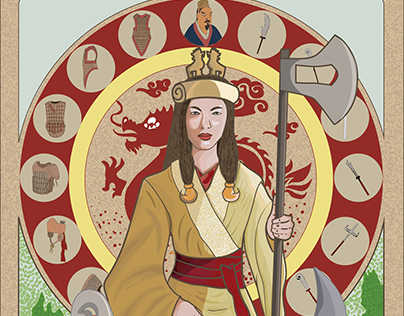
the largest army ever recorded in Shang records
Listen to the Episode
&
Share your Comments with us below!

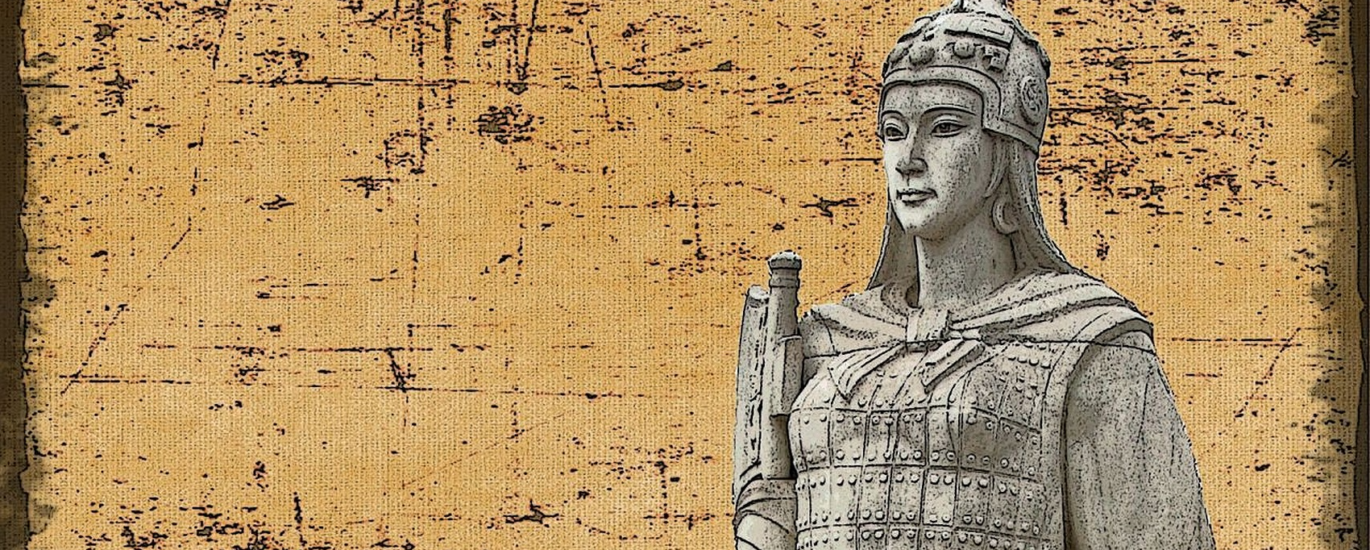
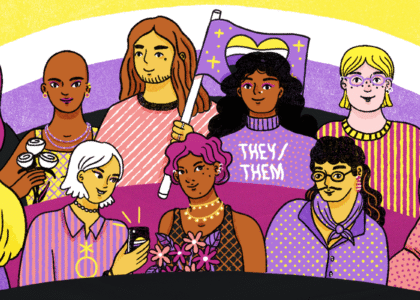



I learned so much and the way the two of you discuss the texts as being so accessible makes me think I could read them as well. The idea of the matriarchy being a myth, and actual descriptors of the yin and Yang to that level of detail were new to me. I think of modern day China being somewhat equal in some ways which does actually tie in with a couple of points made here, despite some of the obvious huge inequalities coveted. I learned so much. Can’t wait for next week’s discussion!